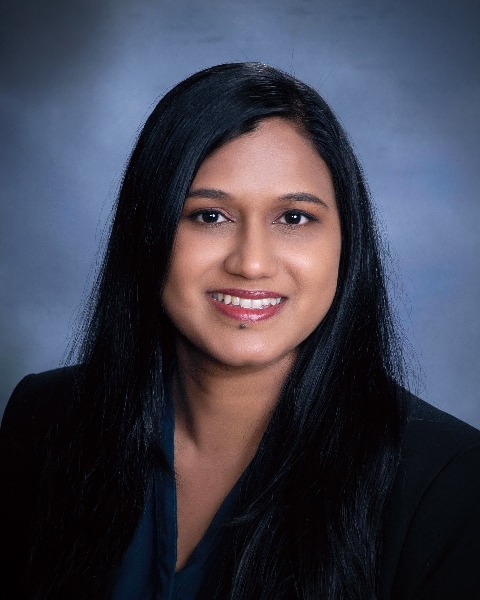Sunday Poster Session
Category: Stomach
P1683 - A Rare Case of Bouveret Syndrome: Challenges and Successes in Management
Sunday, October 27, 2024
3:30 PM - 7:00 PM ET
Location: Exhibit Hall E

Has Audio

Aakhila Rameeza, DO
Cooper University Hospital
Camden, NJ
Presenting Author(s)
Aakhila Rameeza, DO1, Kathy N. Williams, MD, MS2, Rachel Frank, MD3
1Cooper University Hospital, Camden, NJ; 2Cooper University Hospital, Philadelphia, PA; 3Cooper University Hospital, Mt. Laurel, NJ
Introduction: Bouveret syndrome is a rare cause of gastric outlet obstruction (GOO) caused by a large gallstone passing through a bilioduodenal fistula. It carries a high mortality risk (12-30%). Rigler’s triad, which is defined as findings of pneumobilia, bowel obstruction, and an aberrant gallstone seen on CT, are suggestive of Bouveret syndrome. Endoscopic intervention is the first line treatment for gallstone extraction as it has lower rates of morbidity and mortality compared to surgery (1.6% vs. 17.3%). However, it has significantly reduced success rates compared to surgical intervention (43% vs 94.1%). Despite various endoscopic interventions, more definitive surgical management may be necessary.
Case Description/Methods:
A 74-year-old male with a PMH of Barrett’s esophagus, hiatal hernia, CAD and HTN presented to an outside hospital with complaints of abdominal pain, nausea, and vomiting. He underwent a CT Abdomen Pelvis (AP) which showed a distended stomach and non-visualization of the gallbladder. HIDA scan was normal. He was then discharged home.
He presented to our hospital with persistent symptoms. Repeat CT AP showed findings concerning for Bouveret Syndrome: diffuse pneumobilia, a cholecystoenteric fistula with an impacted ectopic gallstone in the duodenal bulb, and a markedly distended stomach suggestive of GOO. An NG tube was placed for decompression, with an output of 2 liters of dark bilious fluid. The patient’s abdominal pain improved. He subsequently underwent 4 upper endoscopies with multiple attempts at stone lithotripsy and removal. The stone was broken into smaller pieces but attempts at complete stone removal were unsuccessful. Ultimately, the patient underwent exploratory laparotomy with gastrotomy with foreign body removal, which was successful.
Discussion:
Despite advanced endoscopic interventions, patients may require surgical management of Bouveret Syndrome. Open surgery has greater risks. If available, laparoscopic enterolithotomy is the preferred approach. Other surgical management options include open gastrotomy, pylorotomy, or duodenotomy. Failure of endoscopic therapy is associated with larger gallstone size and impaction in the distal duodenum. Utilization of multiple endoscopic modalities is associated with higher rates of success. Our patient required an open gastrotomy due to multiple unsuccessful endoscopic attempts at complete gallstone removal. This case highlights the importance of a multidisciplinary approach to treating Bouveret Syndrome.
Disclosures:
Aakhila Rameeza, DO1, Kathy N. Williams, MD, MS2, Rachel Frank, MD3. P1683 - A Rare Case of Bouveret Syndrome: Challenges and Successes in Management, ACG 2024 Annual Scientific Meeting Abstracts. Philadelphia, PA: American College of Gastroenterology.
1Cooper University Hospital, Camden, NJ; 2Cooper University Hospital, Philadelphia, PA; 3Cooper University Hospital, Mt. Laurel, NJ
Introduction: Bouveret syndrome is a rare cause of gastric outlet obstruction (GOO) caused by a large gallstone passing through a bilioduodenal fistula. It carries a high mortality risk (12-30%). Rigler’s triad, which is defined as findings of pneumobilia, bowel obstruction, and an aberrant gallstone seen on CT, are suggestive of Bouveret syndrome. Endoscopic intervention is the first line treatment for gallstone extraction as it has lower rates of morbidity and mortality compared to surgery (1.6% vs. 17.3%). However, it has significantly reduced success rates compared to surgical intervention (43% vs 94.1%). Despite various endoscopic interventions, more definitive surgical management may be necessary.
Case Description/Methods:
A 74-year-old male with a PMH of Barrett’s esophagus, hiatal hernia, CAD and HTN presented to an outside hospital with complaints of abdominal pain, nausea, and vomiting. He underwent a CT Abdomen Pelvis (AP) which showed a distended stomach and non-visualization of the gallbladder. HIDA scan was normal. He was then discharged home.
He presented to our hospital with persistent symptoms. Repeat CT AP showed findings concerning for Bouveret Syndrome: diffuse pneumobilia, a cholecystoenteric fistula with an impacted ectopic gallstone in the duodenal bulb, and a markedly distended stomach suggestive of GOO. An NG tube was placed for decompression, with an output of 2 liters of dark bilious fluid. The patient’s abdominal pain improved. He subsequently underwent 4 upper endoscopies with multiple attempts at stone lithotripsy and removal. The stone was broken into smaller pieces but attempts at complete stone removal were unsuccessful. Ultimately, the patient underwent exploratory laparotomy with gastrotomy with foreign body removal, which was successful.
Discussion:
Despite advanced endoscopic interventions, patients may require surgical management of Bouveret Syndrome. Open surgery has greater risks. If available, laparoscopic enterolithotomy is the preferred approach. Other surgical management options include open gastrotomy, pylorotomy, or duodenotomy. Failure of endoscopic therapy is associated with larger gallstone size and impaction in the distal duodenum. Utilization of multiple endoscopic modalities is associated with higher rates of success. Our patient required an open gastrotomy due to multiple unsuccessful endoscopic attempts at complete gallstone removal. This case highlights the importance of a multidisciplinary approach to treating Bouveret Syndrome.
Disclosures:
Aakhila Rameeza indicated no relevant financial relationships.
Kathy Williams indicated no relevant financial relationships.
Rachel Frank indicated no relevant financial relationships.
Aakhila Rameeza, DO1, Kathy N. Williams, MD, MS2, Rachel Frank, MD3. P1683 - A Rare Case of Bouveret Syndrome: Challenges and Successes in Management, ACG 2024 Annual Scientific Meeting Abstracts. Philadelphia, PA: American College of Gastroenterology.
